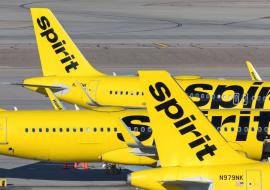Sol Meliá´s Revenues in Cuba Climbed 27 Percent in 2003
Gains reaped by Spanish hotel chain Sol Meliá in Cuba were up a solid 27 percent in 2003 to tally €203 million more than the year before, Gabriel Garcia, the company´s marketing director on the island, said this week.
During a press conference to open Cuba´s new promotional campaign in Spain -in which the Spanish hotel company is playing a mayor role- Mr. Garcia explained that Sol Meliá is currently running 8,446 rooms and 16,892 beds in a dozen hotels on the island nation, numbers that account for 22 percent of Cuba´s total amount of accommodations.
All through 2003, Sol Meliá logged 3.57 million check-ins, up 14 percent from 2002, while occupancy averaged a blistering 75.6 percent all year round.
In the first third of 2004, Cuba´s tourism grew 11.8 percent compared to the first four months of 2003. By the end of May this year, the island nation had already welcomed its one millionth tourist of the year and chances are the Caribbean country could perfectly crack the two-million-sunbather barrier by the end of 2004.
Mr. Garcia also noted that Sol Meliá operates four of its five trademarks in Cuba -Meliá Hotels, Sol Hotels, Paradisus Resorts and Tryp Hotels- and is equally focusing attention on the fostering of family travel, incentives, golf and honeymooners.
In the same breath, the Spain giant is drawing a bead on scuba diving and fishing for the near future.
By 2006, Sol Meliá has plans in the offing to pour some €43 million worth of investments into building a fancy tourist compound in Cayo Largo -the Paradisus Cayo Largo. The project includes the construction of several oases, a main building hemmed in by a huge swimming pool and rooms of roughly 100 square yards each.
This new all-inclusive resort will start yielding clear-cut gains for the company eight years from now.
The growth of the Spanish market (fourth overall on the island of Cuba) scored a whopping 33 percent in May compared to the same month in 2003. First-third numbers ramped up 8.5 percent stacked up against the first four months of the previous year.














